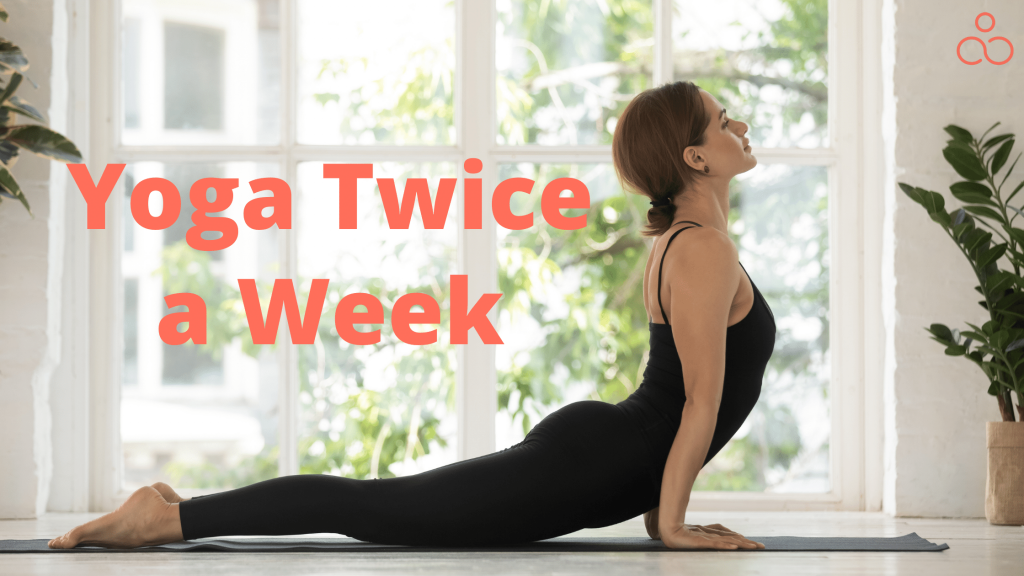Are you looking to improve your mental and physical well-being? If so, practicing Yoga twice a week may be just what you need. In this article-cum-guide, we’ll explore the benefits of Yoga twice a week, including the effectiveness of hot Yoga, whether or not practicing twice a week is enough, and how Yoga compares to other forms of exercise like pilates. Don’t skip out on this comprehensive guide to the wonders of Yoga!
First of all, let’s start with “what is Yoga”
Yoga is an age-old practice that encompasses physical, mental, and spiritual aspects. It has become incredibly popular in recent years due to its numerous benefits. So, what exactly is Yoga? It can be defined as a series of postures, breathing exercises, and meditation techniques that improve flexibility, strength, and balance while promoting relaxation and reducing stress. There are various styles of Yoga, each with its own set of unique characteristics and advantages.
The Different styles of Yoga
Some of the most popular styles of Yoga are Hatha Yoga, Yin Yoga, Iyengar Yoga, Bikram Yoga, Vinyasa Flow Yoga, Ashtanga Yoga, and Kundalini Yoga.
- Hatha Yoga – A gentle, slow-paced practice that emphasizes breathing and relaxation, which is excellent for beginners.
- Yin Yoga – A slow, meditative practice that focuses on opening the hips, lower back, and groin.
- Iyengar Yoga – A precise practice that uses props to achieve proper alignment and helps with injury recovery.
- Bikram Yoga – A practice in a heated room that consists of a set sequence of 26 postures to improve strength and flexibility.
- Vinyasa Flow Yoga – A fast-paced, dynamic practice that synchronizes movement with breath to build heat and endurance.
- Ashtanga Yoga – A physically demanding practice that involves a specific series of poses to build strength and flexibility.
- Kundalini Yoga – An uplifting practice incorporating breathwork, chanting, and meditation to awaken spiritual energy.
Should you Practice Yoga 2x Per Week: Benefits of Yoga Twice A Week
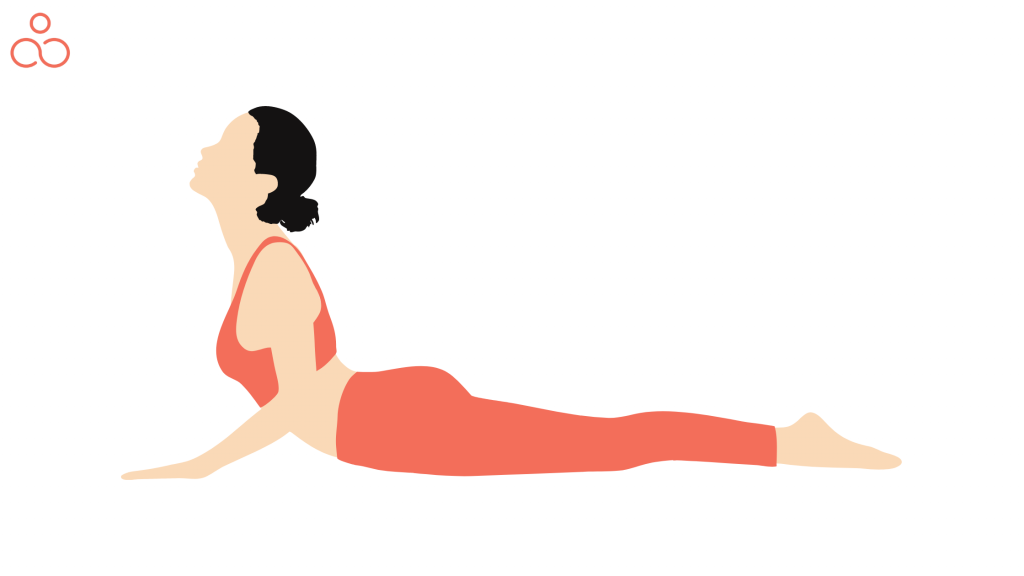
What does the research show?
As the popularity of Yoga has increased globally in recent years, it has become the focus of much research into its numerous effects. Evidence suggests that it provides significant physical benefits, such as improved strength and flexibility. One study on untrained but healthy participants revealed that eight weeks of regular Yoga enhanced muscular power at joints such as the elbows and knees by an impressive 10% – 30%. Moreover, flexibility at joints such as the hips, shoulders and ankles saw even more remarkable increases, with readings rising by 13% – 188%.
Yoga has been found to have further less-obvious but nonetheless significant advantages. It was discovered to minimize the risk of conditions such as heart disease thanks to its positive effect on cardiovascular markers, such as cholesterol, hypertension and abdominal obesity levels. Its effects on the elderly are likewise notable, with significant improvements in balance, mobility, cognitive function and quality of life reported.
As for pain, Yoga appears effective in managing it. It was seen to reduce symptoms in those with headaches, osteoarthritis, neck pain and lower back pain.
- The American Academy of Pediatrics (AAP) suggests Yoga as a safe and efficient practice for youths and adults dealing with emotional, mental, physical, and behavioral well-being issues.
- A 2016 meta-analysis revealed that practicing Hatha Yoga could have a positive effect on anxiety levels. In particular, those with higher anxiety levels at the outset of their study experienced the most satisfying results.
- A 2015 Cochrane review of 61 trials including 4,234 participants, mostly women with fibromyalgia, concluded that the efficacy of biofeedback, mindfulness, movement therapies such as Yoga, and relaxation techniques are still inconclusive due to the low or very low quality of evidence.
- A 2018 Agency for Healthcare Research and Quality report analyzed 8 trials of Yoga as a remedy for low-back pain involving 1,466 total participants. It revealed that Yoga improved pain and function in the short term (1 to 6 months) and the intermediate term (6 to 12 months). Comparatively, the effects of Yoga demonstrated similar benefits to those of exercise.
Finally, Yoga has also been observed to deliver important mental health benefits. After following regular practice over an eight to 12-week period, it was seen to produce moderate improvements in anxiety and depression levels, as well as aiding in stress management.
Practicing Yoga twice a week can greatly benefit you both physically and mentally. Here are some major reasons why you should start practicing Yoga twice a week:
Reasons to Practice Yoga 2x Per Week
Build Strength and Flexibility
Practicing Yoga twice a week can help you build strength, flexibility, and balance. The various Yoga poses and sequences target different muscle groups and help improve overall body strength.
Reduce Stress and Anxiety
Yoga is an excellent way to reduce stress and anxiety. The breathing techniques used in Yoga meditation can help calm the mind, reduce anxiety, and improve overall mental health.
Boost Immune System
Regular Yoga practice can help boost the immune system, reduce inflammation, and improve overall health.
Increase Energy Levels
Yoga can help increase energy levels and reduce fatigue, making it an excellent choice for those who want to feel more energized throughout the day.
Health Benefits of Doing Yoga Twice a Week
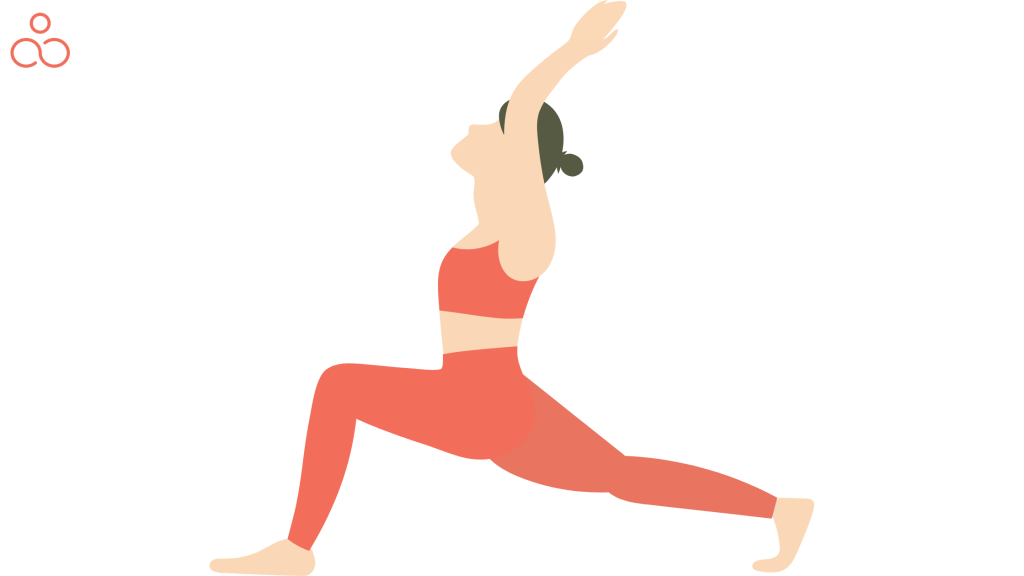
Improve Heart Health
Practicing Yoga two times a week can help improve heart health by lowering your blood pressure and cholesterol levels while also improving circulation.
Enhance Digestion
Yoga can also help enhance digestion by improving blood flow, reducing stress, and stimulating the lymphatic system.
Reduce Chronic Pain
Regular Yoga practice can help reduce chronic pain, such as back and joint pain.
Improve Sleep Quality
Practicing Yoga can help reduce anxiety and stress levels and promote relaxation, leading to improved sleep quality.
Mental Benefits of Practicing Yoga Twice a Week
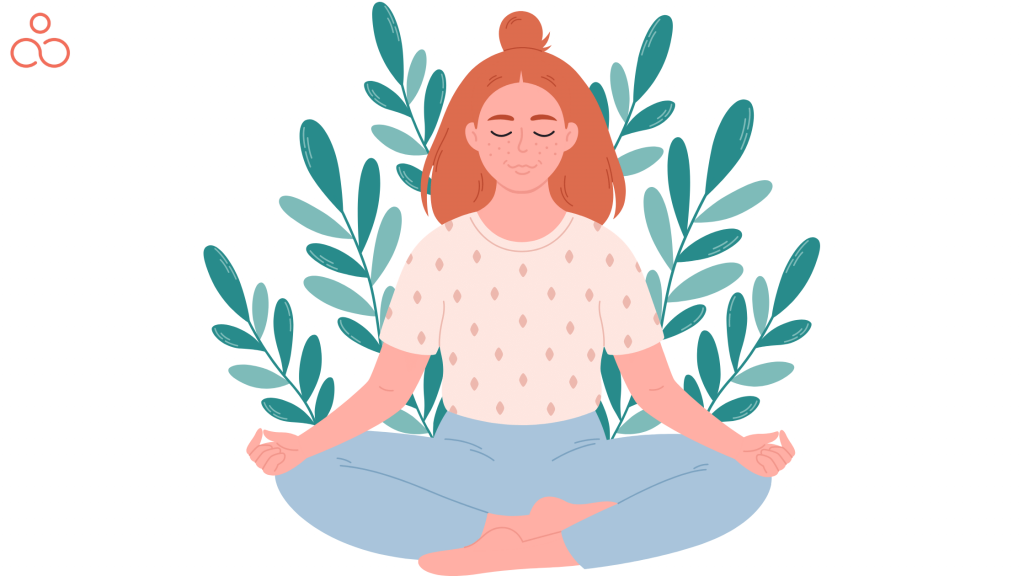
Improve Mental Clarity
Yoga can help improve mental clarity, focus, and concentration, making it an excellent choice for those who want to improve their cognitive abilities.
Reduce Symptoms of Depression
Yoga is also an effective tool for reducing symptoms of depression by providing a calming and relaxing environment for the mind and body.
Manage Anxiety
Yoga can help manage anxiety by reducing stress levels, improving breathing techniques, and promoting relaxation.
Increase Self-Awareness
Practicing Yoga twice a week can help you increase self-awareness and mindfulness, allowing you to understand your thoughts and emotions better.
Why has Yoga become the preferred workout for millennials?
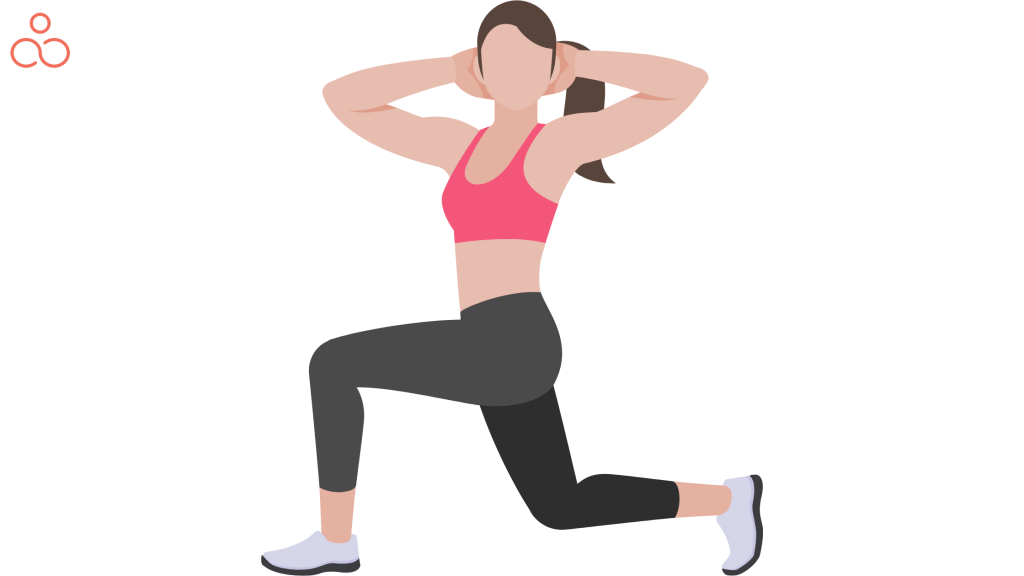
Yoga has become an increasingly popular form of physical exercise for millennials due to its ability to promote overall wellness and stress relief. Not only does Yoga strengthen and stretch the body, but it also focuses on mental clarity and relaxation techniques. With multiple Yoga styles to choose from, including vinyasa, Hatha, and restorative, Yoga can provide a personalized workout experience for each individual’s needs and preferences.
Millennials are also drawn to the community aspect of Yoga classes, which can offer a sense of connection and support in a world that often feels disconnected. Overall, Yoga’s emphasis on mindfulness and self-care makes it a perfect fit for the health-conscious mindset of millennials.
Why Hot Yoga Twice a Week – the Way to Go?
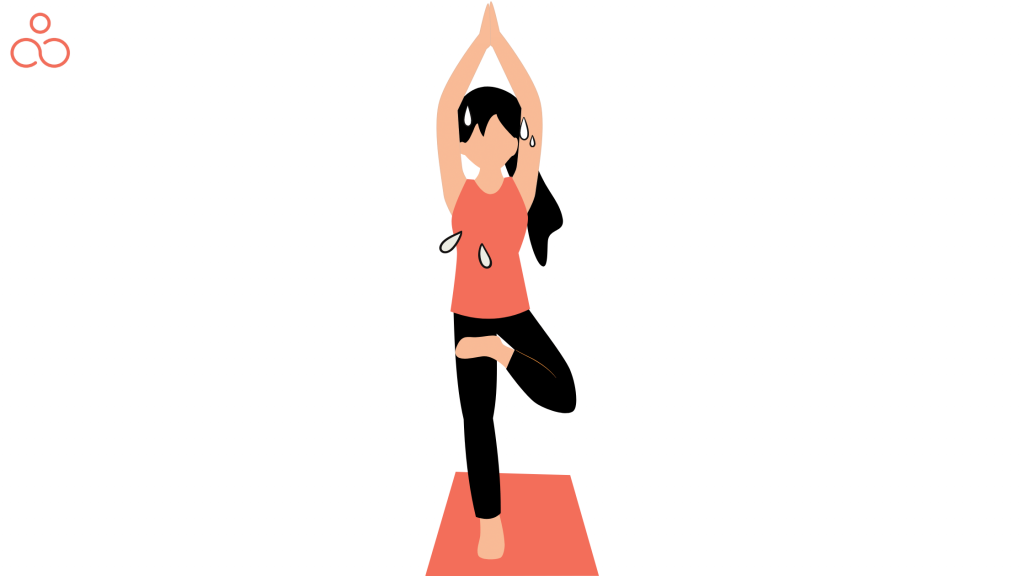
Hot Yoga is a more intense and sweat-inducing form of Yoga that is becoming increasingly popular across the world. It is considered an effective way to detoxify the body, improve flexibility, and boost overall health. There are a number of benefits of hot Yoga, particularly as compared to regular Yoga. By practicing hot Yoga twice a week and listening to your body, you can get the most out of your practice and improve your overall well-being.
Benefits of Hot Yoga
Practising hot Yoga has a number of benefits, which include:
Detoxification
Hot Yoga is a popular form of Yoga that is performed in a heated room, which causes the body to sweat more. This sweat helps remove toxins and other harmful substances from the body, leading to healthier skin and overall improved health.
Improved Flexibility
The heat of hot Yoga helps to loosen the muscles, leading to increased flexibility. This increased flexibility can lead to reduced muscle pain and stiffness.
Increased Cardiovascular Health
The heat of hot Yoga causes the heart to exert more effort, which can lead to improved cardiovascular health. This can also help with weight loss, as the heart rate is increased during the practice.
Hot Yoga vs. Regular Yoga
While both hot Yoga and regular Yoga have many benefits, there are some key differences between the two.
| Parameter | Hot Yoga | Regular Yoga |
| Benefits | The heat of the studio allows for greater flexibility and deeper stretches | Yoga can be done anywhere, allowing for greater range of poses |
| Potential Health Risks | Overheating and dehydration | Limited physical exertion, no additional risk |
| Goal | Increased muscular flexibility, pain relief and mental relaxation | Increased flexibility, relaxation and improved focus |
| Temperature | Hotter; the studio will be heated to 40°C (104°F) | Cooler; ambient room temperature |
| Class Length | 60 to 90 minutes | Typically 45 to 90 minutes |
How Often to Practice Hot Yoga for Best Results
If you are new to hot Yoga, it is recommended that you start with one or two classes per week. This will enable your body to adapt easily to the heat and the intensity of the practice. Once you feel comfortable, you can increase your practice to three or four times per week. For incredible results, it is recommended that you practice hot Yoga at least twice a week, in combination with other forms of exercise such as strength training and cardio.
Is Yoga Twice a Week Enough for Optimal Results?
Practicing Yoga can be a rewarding experience for both beginners and advanced practitioners. However, many people wonder how often they should practice Yoga to achieve the best possible results.
One commonly asked question is whether practicing Yoga twice a week is enough to see changes. While the answer to this question will vary depending on several factors, including individual goals and body type, practicing Yoga twice a week can still provide many benefits.
How Often to Practice Yoga for Optimal Results
The frequency of your Yoga practice entirely depends on your personal goals and your schedule. If you’re practicing Yoga primarily for stress relief and relaxation, practicing 2-3 times a week may be sufficient.
Experts recommend practicing Yoga at least three to four times per week to see significant changes in your body and mind. However, if your goals are focused on building strength and flexibility, you may need to practice more frequently. Aim to practice at least 5-6 times per week and incorporate both active and restorative practices into your routine.
Is Yoga Twice A Week Enough to See Changes
By practicing Yoga just twice a week, you’ll likely experience a boost in your strength and flexibility as well as an improved sense of overall well-being. However, to see significant changes in your body and mind, it’s recommended to practice more frequently.
Consistency is key when it comes to Yoga. If you can commit to practicing at least 4-5 times per week, you can expect to see more significant changes in your body and mind over time.
Finding Balance in Your Yoga Practice
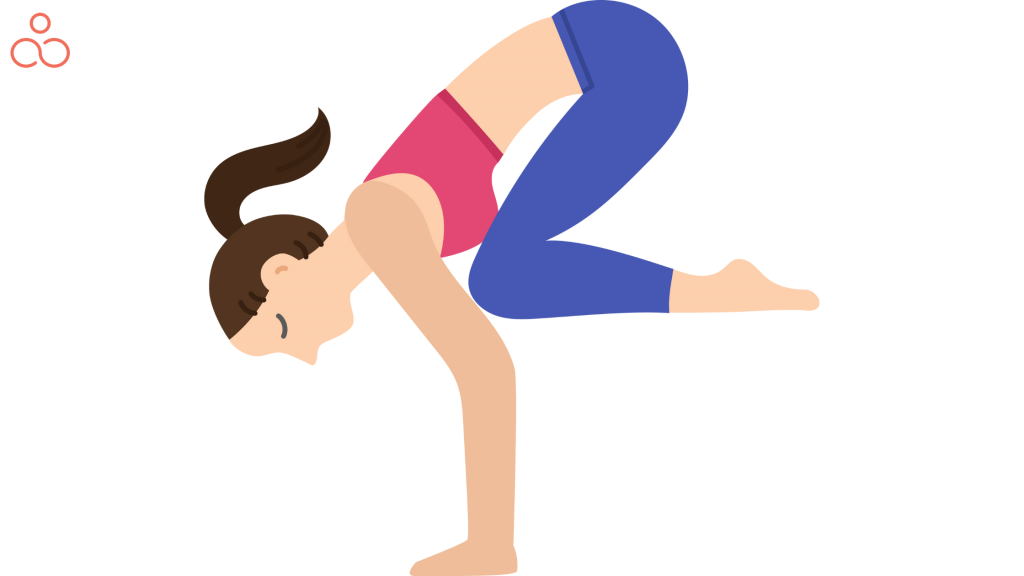
It’s important to find balance in your Yoga practice.
- Consider your goals and needs. If you are looking to improve your flexibility, you may want to practice more frequently. If you are looking to reduce stress and anxiety, you may want to focus on gentle, relaxing poses.
- Listen to your body and adjust your practice accordingly. If you are feeling tired or sore, it’s okay to take a rest day. It’s better to rest and recover than to push yourself too hard and risk injury. Practicing too frequently can lead to burnout and injury, while not practicing enough can hinder your progress.
- Mix up your practice. Try new styles of Yoga, different poses, and different instructors to keep your practice fresh and exciting.
- Stay consistent and work your way through. If you’re new to Yoga, start with 2-3 times per week and gradually increase your frequency as you become more comfortable. Remember that Yoga is a journey, and it’s important to enjoy the process.
Yoga or Pilates Twice a Week: Which is Better?
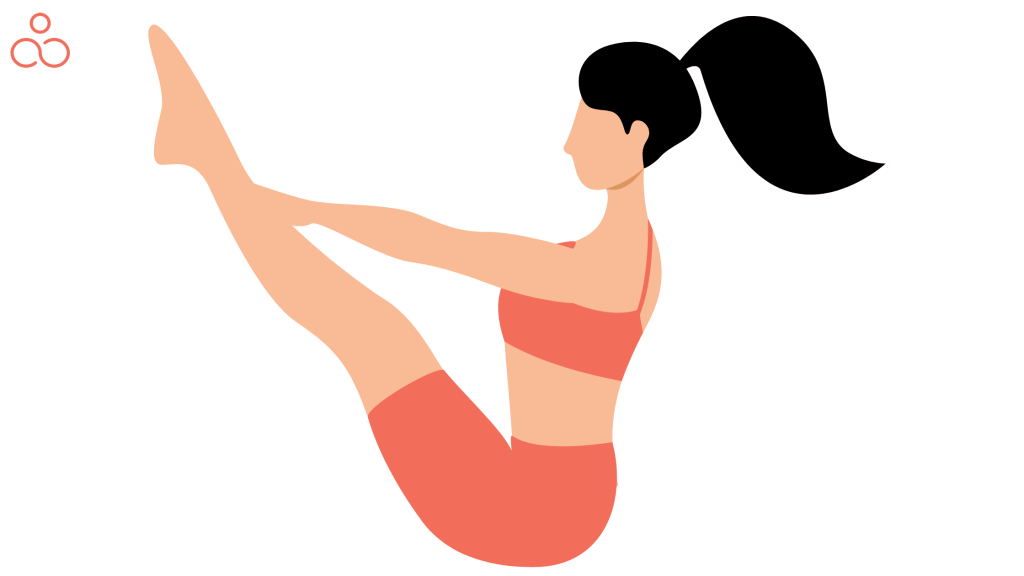
Are you looking to improve your flexibility and strength but need to know whether Yoga or pilates twice a week is the right fit for you?
Yoga and Pilates have become increasingly popular forms of exercise in recent years. They both offer numerous benefits and can be done twice a week as part of a comprehensive fitness regimen.
Yoga can be traced back thousands of years to Ancient India and is often seen as a spiritual activity that celebrates harmony between mind, body, and spirit. It typically involves stretching, breathing exercises, and meditation to achieve a feeling of tranquility. Pilates is a relatively newer form of exercise that was developed in the 1920s. Unlike Yoga, it’s a more structured form of exercise that focuses on developing core strength and improving posture using a blend of high-intensity, low-impact movements.
Yoga & Pilates have some similarities, but they are also quite different in terms of philosophy, techniques, and styles.
Yoga vs. PILATES
| Parameter | Yoga | Pilates |
| Focus | Flexibility and relaxation | Strength and posture |
| Movement | A slow, more flowing set of poses | A series of slow, controlled movements |
| Equipment | Typically none, but may use a mat or props such as blocks or straps | Usually relies on a mat or props such as a foam roller or resistance bands |
| Breathing | Deep, slow breathing | Focused, often rapid breathing |
| Intensity | Low to moderate | Moderate to high |
Overall, Yoga and Pilates can both be beneficial for achieving physical and mental well-being, with Pilates offering a more structured approach tailored towards strengthening the body. Ultimately, each has its own advantages and can be done twice a week, depending on what works best for you.
So, Which is Better?
Both Yoga and pilates offer many benefits for physical and mental health. Choosing between the two ultimately depends on individual preferences, goals, and needs.
Practicing any discipline twice a week can be an effective way to improve overall wellness. However, it’s essential to listen to your body and avoid overexertion or injury. By understanding the pros and cons of both Yoga and pilates, you can make an informed decision about which practice is right for you.
The Importance of a Consistent Yoga Practice
Are you looking to start or maintain a consistent Yoga practice? The benefits of doing so are plentiful.
Regular Yoga practice is not only good for your physical health but also has positive impacts on mental health and overall well-being. Now, let’s examine some of its benefits and tips:
What are the Benefits of Consistency in Your Yoga Practice?
A consistent practice of Yoga can offer numerous physical advantages, including enhanced flexibility and strength. It can also improve circulation, digestion, and balance. In addition, regular Yoga practice can lower your blood pressure and reduce the levels of cortisol, a hormone that our body releases when we are stressed.
In addition to physical benefits, regularly practicing Yoga can have positive effects on mental health as well. Yoga is known to help reduce anxiety and depression while promoting a sense of calm and relaxation. Regular Yoga practice can also help with concentration and focus, leading to increased productivity throughout the day.
Some Amazing Tips for Maintaining a Regular Yoga Routine!
Maintaining a consistent Yoga practice can be difficult; however, there are various methods to make it more manageable. Here are some important tips to help you stay on track:
Schedule Yoga into your daily routine
Just like you schedule time for work, make time for Yoga. When you prioritize it in your schedule, you’re more likely to stick to it.
Find a class or instructor that you enjoy
A good class or instructor will help you stay engaged and motivated in your practice.
Make it social
Find a buddy or family member to join you in the practice session. Accountability can go a long way in helping you maintain a consistent practice.
Mix it up
If you’re finding your practice getting boring or stale, try mixing it up with new poses or styles of Yoga.
Remember why you practice
Whether it’s to improve physical health, mental health, or both, remind yourself of the reasons why you started practicing Yoga in the first place.
Yoga for Stress Relief: The Benefits of Practicing Twice a Week

Stress and anxiety are the haunting problems of the modern world, and Yoga has emerged as one of the most popular ways to deal with these issues. With its holistic approach to physical and mental wellness, Yoga has been found to have significant stress-reducing effects on individuals who practice it regularly.
How Yoga Can Help Reduce Stress and Anxiety
Yoga is an excellent practice that can help reduce stress and anxiety. By combining physical postures, breathing exercises, and meditation, Yoga promotes overall health and well-being. Numerous studies have shown that Yoga can have positive effects on stress, anxiety, and overall mental health.
Specifically, by reducing the production of stress hormones, lowering blood pressure, and inducing deep relaxation, Yoga can be a powerful practice for counteracting the negative effects of chronic stress.
Best Types of Yoga for Stress Relief
While all types of Yoga can be beneficial for stress relief, some styles are particularly effective. These include:
Hatha Yoga
This gentle, slow-paced style is perfect for beginners and individuals who want to reduce stress and improve flexibility.
Restorative Yoga
This Yoga style incorporates the use of props like bolsters and blankets to support the body in passive stretches, promoting profound relaxation and stress relief.
Yin Yoga
Yin Yoga involves holding poses for a few minutes to stretch the connective tissue around the joints, promoting deep relaxation and stress relief.
How Often to Practice Yoga for Stress Relief
The frequency of your Yoga practice will depend on your personal goals and lifestyle. For individuals seeking stress relief, practicing Yoga twice a week can be an effective way to manage symptoms and improve overall well-being. However, a more frequent practice may be necessary for individuals with high levels of chronic stress or anxiety.
The Role of Nutrition in Supporting Your Yoga Practice
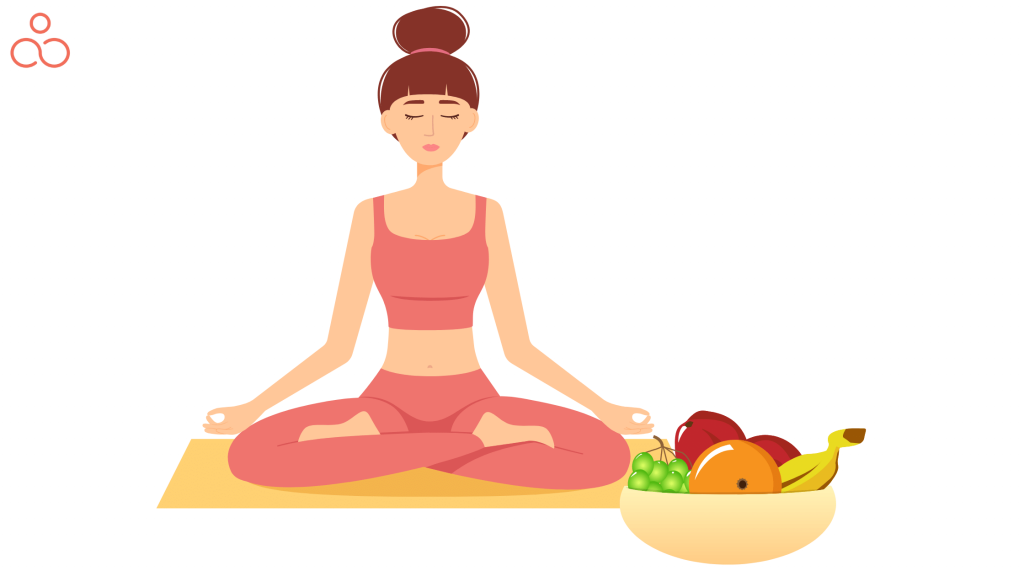
As a yogi, it is essential to fuel your body with nutrient-rich foods that can give you lasting energy during your practice.
Some of the recommended best foods for yogis
- Fresh fruits.
- Vegetables such as spinach, kale, carrots, and broccoli.
- Whole grains like quinoa, brown rice, and oatmeal.
- Nuts and seeds such as chia seeds, almonds, and flaxseeds.
- Legumes such as lentils, chickpeas, and black beans.
- Vegetarian sources of protein such as tofu, tempeh, and quinoa.
These foods provide essential nutrients for a healthy and balanced diet that can support a yogi’s physical and mental well-being.
Fueling Your Body for Yoga Practice
In order to perform at your best, it’s essential to not only eat the right foods but also to fuel your body at the right time. Providing your body with a balanced meal 2-3 hours before practice can give it the energy it requires to perform. Make sure to include a mix of carbohydrates, protein, and healthy fats in your pre-practice meal to fuel your body and mind!
Some great pre-practice meal ideas include:
- Whole grain toast with almond butter and sliced banana
- Greek yogurt with berries and granola
- Brown rice with grilled chicken and roasted vegetables
After your practice, it’s important to replenish your body with the proper nutrients it needs to recover. Within 30 minutes of finishing your practice, try to eat a snack or meal that contains carbohydrates and protein.
Some great post-practice snack ideas include:
- Homemade trail mix with nuts, nutrient-packed seeds, and sweet dried fruit
- Hummus and veggies
- Chocolate milk
Some Tips To Make Healthy Eating a Habit to Support Your Yoga Routine!
To make healthy eating a habit, it’s important to plan ahead and be prepared. Here are some important tips to help you make healthy eating a part of your daily routine:
Meal prep
Take some time to prepare meals and snacks for the week ahead.
Keep healthy snacks on hand
Fresh fruit, nuts, seeds, and veggie sticks make great snacks.
Plan ahead
If you know you have a busy day ahead, plan for healthy meals and snacks to take with you.
The Role of Mindfulness in a Two-Times-a-Week Yoga Practice
It is often said that mindfulness is the key to a successful Yoga practice, no matter how often one practices. This is especially true for those who only practice two times a week.
Mindfulness allows individuals to be fully present and aware of their body and breath, which can lead to deeper and more effective Yoga poses.
Additionally, mindfulness can help individuals cultivate a sense of calm and focus, which can carry over into their daily lives. By incorporating mindfulness into their two-times-a-week Yoga practice, individuals can reap both physical and mental benefits.
Common Mistakes to Avoid When Practicing Yoga Twice a Week
Yogis often find themselves making mistakes when practicing Yoga twice a week. Whether you’re new to the practice or an experienced practitioner, here are some common mistakes to avoid:
Pushing too hard
While it is important to challenge oneself, it is important to do so in a gentle and controlled manner. Avoid pushing too hard and risking injury.
Neglecting breath control
Deep breathing is a crucial aspect of Yoga practice. Make sure to focus on your breath and engage in deep breathing throughout your practice.
Poor alignment
Proper alignment is essential for both effective and safe practice. Pay attention to the alignment of your body in each pose to ensure you are maintaining proper posture.
Skipping warm-up and cool-down
Warm-up and cool-down are both important for a successful workout, including Yoga. Skipping your warm-up can lead to muscle strain or sprain, whereas skipping your cool-down can result in less flexibility, soreness, and even fainting due to decreased blood flow.
Wearing inappropriate clothing
Tight or restrictive clothing can hinder movement and cause discomfort during practice. Choose comfortable and breathable clothing that allows for a full range of motion.
By avoiding these common mistakes and remaining mindful throughout your practice, you can enjoy the full benefits of practicing Yoga twice a week.
Tips for staying motivated to practice Yoga!
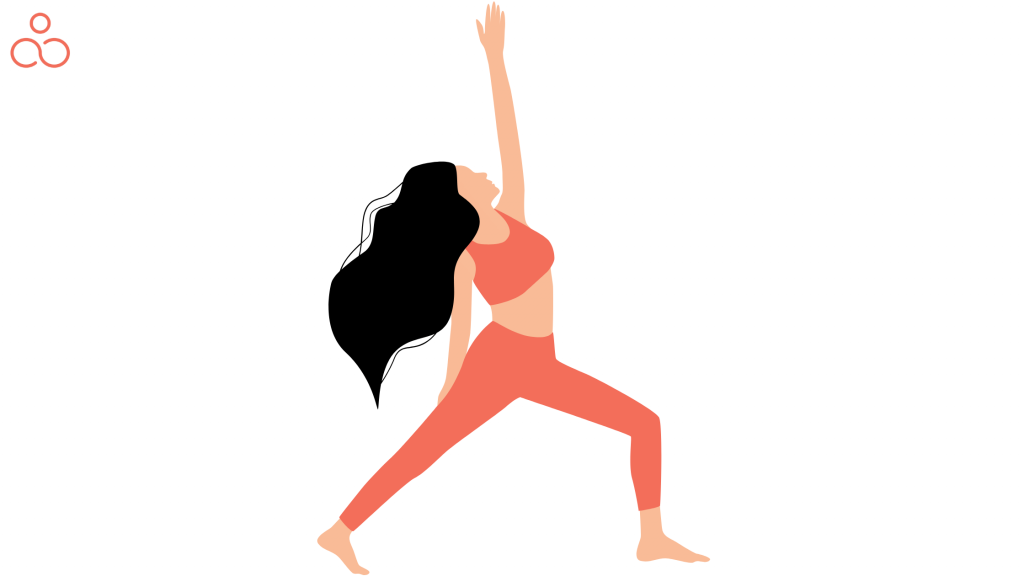
Set a goal
Whether it’s to improve your flexibility or reduce stress, setting a specific goal can help keep you focused and motivated.
Track your progress
Monitoring your progress allows you to appreciate your growth and sparks a feeling of achievement.
Mix it up
Trying out different styles of Yoga or taking classes with different teachers can help keep your practice fresh and exciting.
Find a community
Joining a Yoga group or attending a class with friends can help keep you accountable and motivated.
Give yourself grace
Remember that Yoga is a practice, and progress takes time. Give yourself permission to take breaks, and remember that every practice is an opportunity to learn and grow.
FAQ’s
Can we do Yoga both in the morning and evening?
Yes, you can practice Yoga both in the morning and evening as long as it suits your schedule and lifestyle. Some people find it beneficial to practice Yoga in the morning to energize their body and mind for the day ahead, while others prefer to do it in the evening to help reduce stress and unwind from the day. Ultimately, the best time to practice Yoga is the time that is most convenient and effective for you.
How many times a day should I do Yoga?
Based on your fitness level and schedule, it is recommended to do Yoga at least once a day for beginners and up to three times a day for advanced practitioners. However, make sure to listen to your body and not push yourself too hard. Consult with a certified Yoga instructor to create a personalized practice schedule that works for you.
Can Yoga twice a week improve my flexibility?
Yes, Yoga twice a week can significantly improve your flexibility. Regular Yoga practice strengthens and lengthens your muscles, which helps to improve your joint range of motion, increase circulation, and improve your posture. Additionally, certain poses also help alleviate tension and stress, improving your overall health.
Can practicing Yoga twice a week lead to weight loss?
While practicing Yoga alone may not lead to significant weight loss, it can help with weight management by reducing stress and increasing mindfulness around diet choices. Combining Yoga with a balanced diet and other types of exercise can lead to weight loss over time.
Can Yoga twice a week increase my strength?
Yes, Yoga can improve strength and flexibility when practiced twice a week. Incorporating poses to target key muscle groups, as well as stretches, can help support and maintain muscle strength, as well as reduce the risk of injuries due to overuse. Additionally, Yoga encourages mindful breathing, which can help to improve overall physical and mental strength.
Is practicing Yoga for two hours daily too much?
Two full hours of Yoga each day is considered a lengthy and intense practice, making it challenging for many beginners to attempt. Nonetheless, the benefits of Yoga are vast and experienced practitioners may enjoy challenging themselves with a two-hour session of either a rigorous Ashtanga practice or a soothing Yin class.
Can Yoga 2x per week help reduce my stress and improve my sleep, balance, and posture altogether?
Yes, it can! Studies show that regular Yoga practice 2x per week can help reduce stress, improve sleep, increase balance, and improve posture.
- Yoga can help ground the body and promote relaxation, reducing stress and improving overall mental health.
- Yoga can also promote better sleep quality and posture by promoting proper breathing and alignment.
- Yoga also helps to increase core strength and the overall sense of balance and coordination.
Conclusion
After reading this guide, you should now know why practicing Yoga twice a week is crucial for physical and mental wellness. However, if Yoga doesn’t appeal to you, consider trying Pilates or Tai Chi as great alternatives that focus on building strength, flexibility, and mindfulness. Incorporating weightlifting or bodyweight exercises into your routine can also further improve your overall fitness. Don’t be afraid to switch things up and find what works best for you, your body, and your goals!

